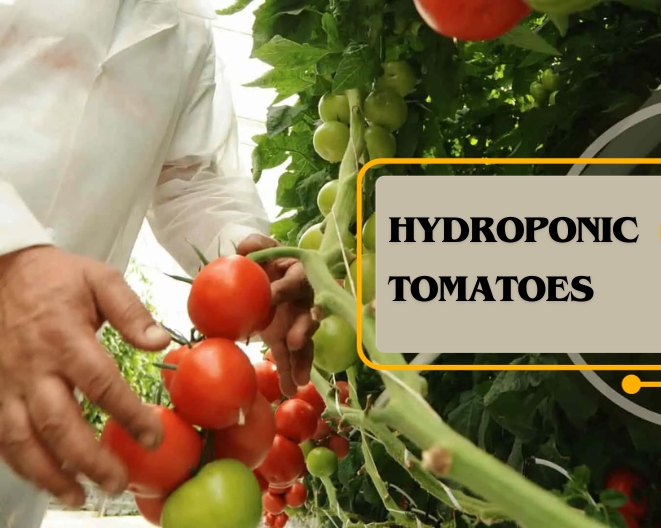In an era defined by unprecedented environmental challenges, the imperative to address climate change, promote sustainability, and foster resilience has never been more pronounced. As we stand at a critical juncture in human history, the decisions, actions, and innovations we undertake today will shape the trajectory of our planet’s future. To navigate this global challenge, individuals, communities, businesses, and governments must embrace a multifaceted approach. This blog post outlines “50 ways to reduce climate change,” providing a comprehensive guide rooted in research and sustainability principles.
Comprehensive Strategies: 50 Ways to Reduce Climate Change
As the global community grapples with the escalating threats of climate change, the need for actionable strategies and informed solutions has never been more urgent. This comprehensive guide aims to illuminate 50 ways to reduce climate change, providing a holistic overview of multifaceted approaches that encompass energy transition, sustainable agriculture, circular economy practices, policy advocacy, and community engagement. By delving into each strategy’s intricacies, implications, and transformative potential, this guide serves as a roadmap for individuals, policymakers, businesses, and communities committed to adverse impacts of Climate Change Mitigation and forging a sustainable, resilient future for all.
1-10: Energy Transition and Efficiency
The transition from conventional energy sources to renewable alternatives represents a pivotal shift in our collective journey toward a sustainable future. Embracing renewable energy technologies and enhancing energy efficiency are fundamental pillars in mitigating climate change, reducing greenhouse gas emissions, and fostering economic resilience. By prioritizing innovation, investment, and policy support in the energy sector, we can accelerate the transition to a low-carbon economy, create green jobs, and ensure energy security for generations to come.
This section delves into key strategies and initiatives underpinning energy transition and efficiency, highlighting their critical role in shaping a more equitable, prosperous, and environmentally conscious world.
- Transition to Renewable Energy: Invest in solar, wind, and hydroelectric power.
- Enhance Energy Efficiency: Adopt LED lighting, efficient appliances, and smart thermostats.
- Promote Public Transit: Support and utilize public transportation systems.
- Reduce Vehicle Emissions: Opt for electric or hybrid vehicles and promote carpooling.
- Upgrade Infrastructure: Retrofit buildings for energy efficiency and resilience.
- Support Clean Technology: Invest in clean energy startups and innovations.
- Reduce Energy Consumption: Implement energy-saving practices at home and work.
- Advocate for Policy Change: Support renewable energy policies and incentives.
- Educate Communities: Organize workshops on energy conservation and efficiency.
- Monitor Energy Use: Utilize energy monitoring tools and audits.
11-20: Sustainable Agriculture and Land Use
The confluence of agriculture and land use practices carries profound implications, particularly when considering the 50 ways to reduce climate change. Embracing sustainable agricultural practices, regenerative farming techniques and responsible land management is paramount to mitigating environmental degradation, conserving natural resources, and enhancing ecosystem health. Utilize resources like climate change analyst insights to delve deeper into the intricacies of sustainable agriculture and its potential impact on climate change mitigation.
This section illuminates the transformative potential of sustainable agriculture and land use strategies, underscoring their pivotal role in fostering climate adaptation, preserving biodiversity, and ensuring equitable access to nutritious food. By prioritizing soil health, water conservation, agroforestry, and community engagement, we can cultivate resilient ecosystems and empower agricultural communities to thrive harmoniously with nature.
- Promote Organic Farming: Support organic agriculture and reduce chemical inputs.
- Adopt Agroforestry Practices: Integrate trees into farming systems for carbon sequestration.
- Reduce Deforestation: Support forest conservation and sustainable logging practices.
- Implement Crop Rotation: Enhance soil health and reduce erosion.
- Support Local Farmers: Purchase local, seasonal produce to reduce food miles.
- Reduce Food Waste: Implement composting and recycling initiatives.
- Advocate for Sustainable Land Use: Support land-use policies that prioritize conservation.
- Implement No-Till Farming: Reduce soil disturbance and carbon loss.
- Support Regenerative Agriculture: Enhance soil health and biodiversity.
- Reduce Livestock Emissions: Adopt sustainable livestock practices and reduce methane emissions.
21-30: Circular Economy and Waste Management
The concept of a circular economy transcends traditional linear models of production and consumption by emphasizing resource efficiency, waste reduction, and sustainable lifecycle management. By reimagining waste as a valuable resource and promoting closed-loop systems, we can minimize environmental impact, conserve natural resources, and mitigate climate change.
This section delves into innovative strategies and initiatives within circular economy and waste management, highlighting their transformative potential in fostering sustainable consumption patterns, promoting green innovation, and catalyzing economic prosperity. We can transition towards a regenerative and equitable economic paradigm that prioritizes planetary health and human well-being through waste reduction, recycling, upcycling, and extended producer responsibility.
- Promote Recycling: Support recycling programs and initiatives.
- Reduce Single-Use Plastics: Opt for reusable alternatives and promote plastic-free initiatives.
- Support Circular Design: Prioritize products designed for durability and recyclability.
- Reduce Packaging Waste: Advocate for sustainable packaging solutions.
- Implement Extended Producer Responsibility: Hold companies accountable for product lifecycle impacts.
- Support Eco-Friendly Products: Choose sustainable and ethical products and services.
- Reduce Water Waste: Implement Water-Saving Techniques at home and work.
- Support Waste-to-Energy Initiatives: Invest in renewable energy from waste technologies.
- Educate on Waste Reduction: Organize community clean-ups and awareness campaigns.
- Implement Composting Programs: Reduce organic waste and promote soil health.
31-40: Policy Advocacy and Governance
Within the intricate web of global climate action and sustainable development, the pivotal role of policy advocacy and governance emerges prominently, particularly when considering the “50 ways to reduce climate change.” These elements are instrumental in steering systemic change, nurturing international collaboration, and enacting truly transformative legislation.
This section elucidates the multifaceted landscape of policy advocacy and governance, underscoring its pivotal role in shaping regulatory frameworks, mobilizing public support, and holding stakeholders accountable. Stay informed with climate change analyst insights and leverage tools like a climate change meme to amplify advocacy efforts and drive meaningful policy change.
- Vote for Climate Action: Support political candidates with strong climate policies.
- Engage in Advocacy: Join climate advocacy groups and campaigns.
- Support International Agreements: Advocate for global cooperation on climate change.
- Promote Carbon Pricing: Implement and support carbon pricing mechanisms.
- Invest in Climate Resilience: Allocate resources for adaptation and mitigation strategies.
- Support Indigenous Rights: Respect and uphold indigenous land rights and knowledge.
- Advocate for Environmental Justice: Address climate impacts on vulnerable communities.
- Promote Green Finance: Invest in sustainable and responsible financial products.
- Encourage Corporate Responsibility: Hold corporations accountable for environmental impacts.
- Support Research and Innovation: Invest in climate research, technology, and solutions.
41-50: Education, Community Engagement, and Lifestyle Changes
Education, community engagement, and lifestyle changes serve as foundational pillars in fostering a culture of sustainability, resilience, and collective action. Empowering individuals, communities, and institutions with knowledge, skills, and resources is instrumental in driving behavior change, promoting environmental stewardship, and building resilient communities.
This section explores the transformative potential of education, community engagement, and lifestyle modifications, highlighting their integral role in cultivating a global consciousness, fostering social equity, and inspiring grassroots innovation. Utilize resources like the climate change poster and engage with community-driven initiatives to inspire grassroots innovation and catalyze positive societal transformation.
- Educate and Empower: Promote climate literacy and education at all levels.
- Engage Youth: Support youth-led climate initiatives and movements.
- Organize Community Events: Host climate forums, workshops, and seminars.
- Support Green Schools: Advocate for sustainability in educational institutions.
- Reduce Consumption: Adopt minimalist and sustainable consumption habits.
- Promote Sustainable Tourism: Choose eco-friendly travel options and destinations.
- Reduce Air Travel: Opt for alternatives like video conferencing and local vacations.
- Plant Trees: Participate in reforestation and afforestation initiatives.
- Support Biodiversity: Advocate for conservation and restoration of ecosystems.
- Lead by Example: Be a role model for sustainable living and climate action.
Conclusion
These 50 ways to reduce climate change encapsulate a multifaceted approach to addressing one of the most pressing challenges of our time. By embracing renewable energy, enhancing energy efficiency, promoting sustainable agriculture, preserving ecosystems, reducing waste, advocating for policies, investing in resilience, educating the public, and fostering innovation, we can collectively mitigate climate change’s adverse impacts. As global citizens, policymakers, businesses, and communities, let us unite in our commitment to protecting nature’s bounty, ensuring a sustainable future for generations to come.
Access informative materials like the infographic on climate change to grasp the significance of transitioning towards a circular economy and its potential benefits for climate action. Together, let us embark on this transformative journey, armed with knowledge, innovation, and a shared vision for a sustainable future.
FAQs
A: Ten ways to stop climate change include using renewable energy, boosting energy efficiency, opting for sustainable transportation, adopting green agricultural practices, reducing food waste, conserving water, embracing circular economy principles, advocating for emissions-reducing policies, investing in carbon capture, and protecting/restoring forests.
A: Humans can reduce climate change by shifting to renewable energy sources, cutting down on fossil fuel use, practicing sustainable farming methods, reducing water waste, and actively supporting climate-related policies.
A: To reduce climate change, it’s essential to implement multifaceted strategies like transitioning to renewable energy, adopting sustainable agricultural practices, and advocating for policies to implement at least 50 ways to reduce climate change.
A: 1:Climate change is driven by human activities, 2: resulting in rising global temperatures, 3: melting ice leading to rising seas, 4: increased occurrences of extreme weather events, 5: adverse effects on ecosystems and human health, 6: necessitating collective global action, 7: a shift towards renewable energy, 8: sustainable land use, 9: adaptation strategies, and 10: emphasis on education and innovation.
A: Climate change facts include its linkage to rising global temperatures primarily due to human emissions, consequent sea level rises, intensification of extreme weather events, impacts on agriculture and food security, and disproportionate effects on vulnerable communities, highlighting the need for global cooperation.
A: The main causes of climate change encompass fossil fuel emissions, deforestation activities, agricultural methane and nitrous oxide releases, emissions from industrial processes, and transportation-related emissions.





